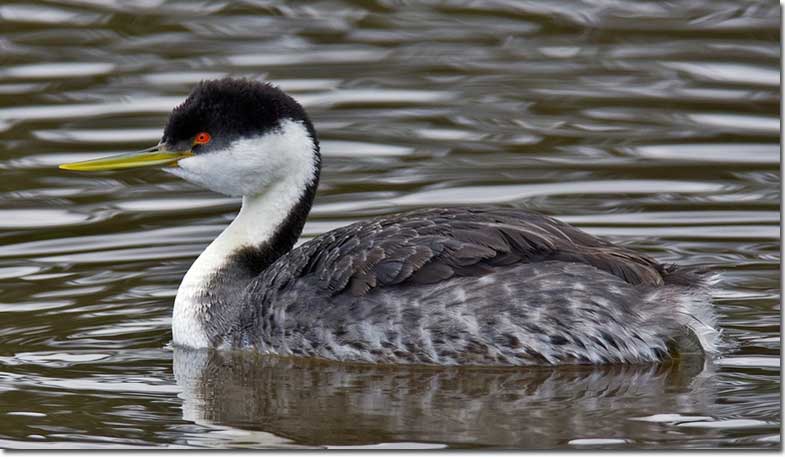Once considered the same species as Clark’s Grebe but now classified separately, the boldly patterned, black and white Western Grebe breeds over a large portion of western North America but winters primarily along the West Coast. Migratory movements occur at night, and Western Grebes usually travel in flocks.
Western Grebes are capable divers and propel themselves underwater with their feet. Most dives last about half a minute. Weather is one major threat to Western Grebes, and can cause significant destruction of nests through storm generated wave action. Birds can also be frozen into lakes when surface water freezes overnight.
The Western Grebe has black upperparts, hindneck, and crown, and white underparts. It has a pointed, greenish-yellow bill and red eyes. The eyes are usually enclosed by a black area of feathers extending down from the crown and forehead.
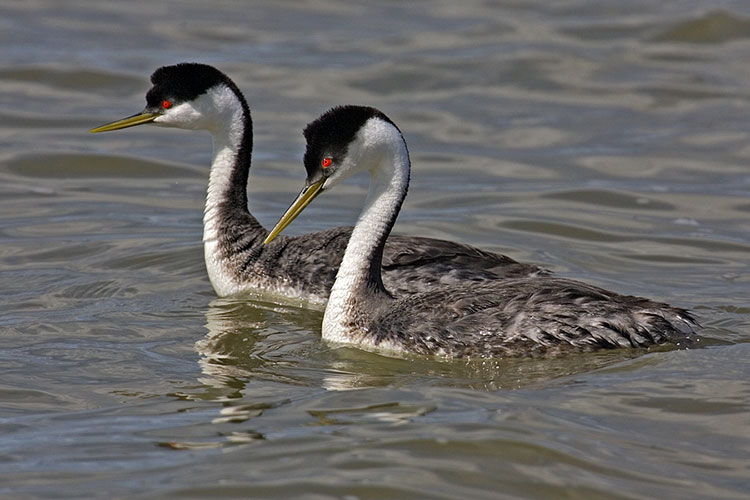
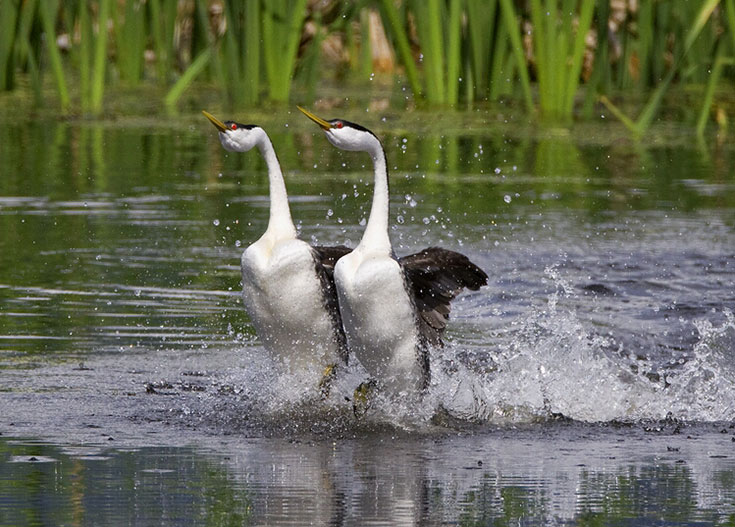
Description of the Western Grebe
BREEDING MALE
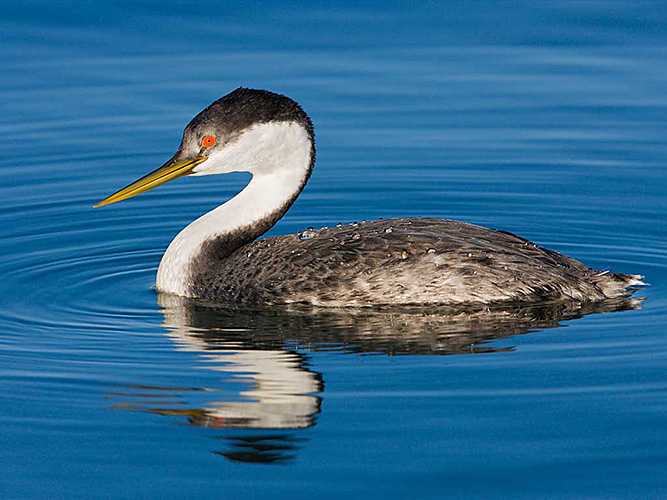
The Western Grebe has black upperparts, hindneck, and crown, and white underparts. It has a pointed, greenish-yellow bill and red eyes. The eyes are usually enclosed by a black area of feathers extending down from the crown and forehead.
Female
Sexes are similar.
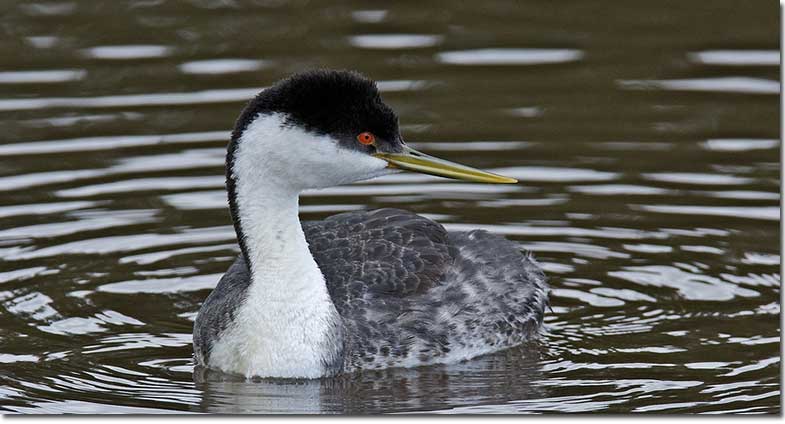
Western Grebe
Seasonal change in appearance
Seasonal changes are small. Winter birds can have a pale area around the eye.
Juvenile
Juveniles have neck and back feathers edged with gray.
Habitat
Marshes with emergent vegetation and ocean bays.
Diet
Primarily fish.
Behavior
Forages by diving.
Range
Breeds across much of the western U.S. and south-central Canada and winters along the West Coast and in the southwestern U.S.
Fun Facts
When the chicks are getting older and close to fledging age, the parent may spilt the brood between them.
Where Clark’s and Western Grebes breed in the same area, males of the two species are aggressive towards one another
Vocalizations
The call is made up of two notes sounding like “crick-creek”.
Similar Species
- Clark’s Grebes have bills that are more orange, and usually have a white area immediately around the eye.
Nesting
The nest is a floating pile of plant material.
Eggs: 2-4.
Color: Pale bluish-white.
Incubation and fledging:
– Young hatch at 24 days.
– Young fledge (leave the nest) shortly after hatching to climb onto the back of a parent.
Photos
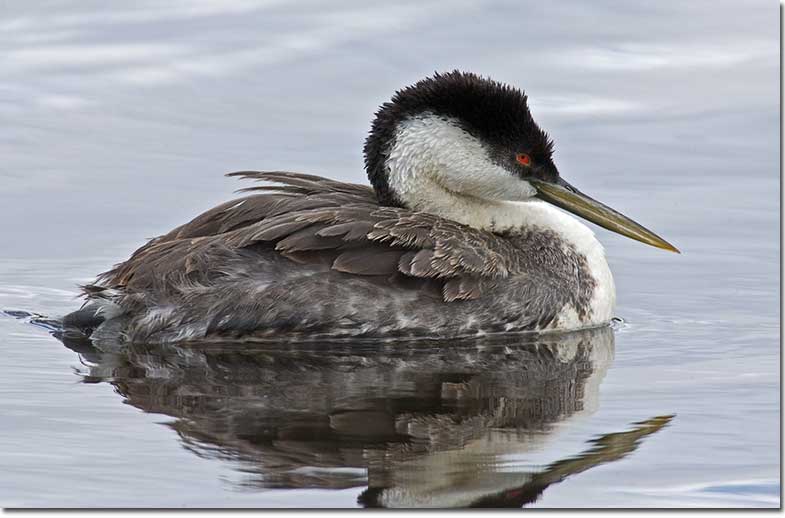
Dirty green color to the bill in this photograph. Photograph © Alan Wilson.

Check, neck and belly pure white. Red eye. Photograph © Alan Wilson.
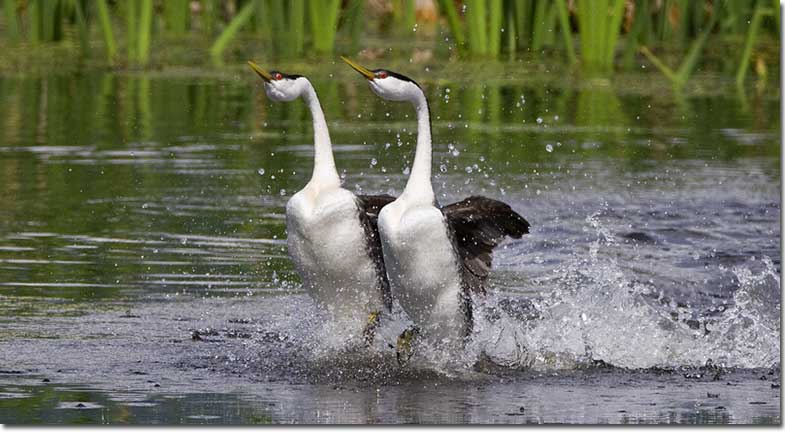
Both Western and Clark’s Grebe are famous for their running dances during courtship. Photograph © Elaine Wilson.
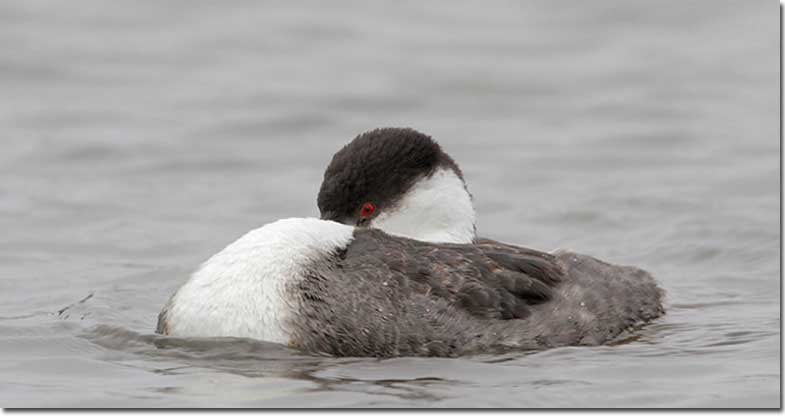
Note the black of the crown of the head extends below the eye. In non-breeding birds (generally September to February) the amount of black surrounding the eye of the Western Grebe recedes. The Western and Clark’s are then very similar, distinguished by the color of the bill. Photograph © Greg Lavaty.
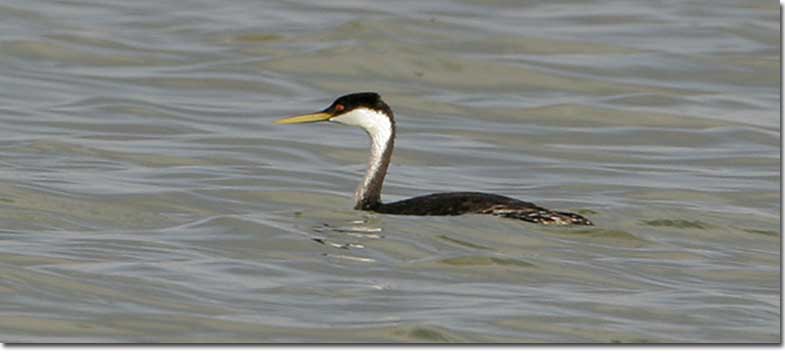
The color of the bill and the amount of black surrounding the eye are visible at a distance, if the light is good. Poor light and birds bouncing in the waves can provide a challenge. Photograph © Greg Lavaty.
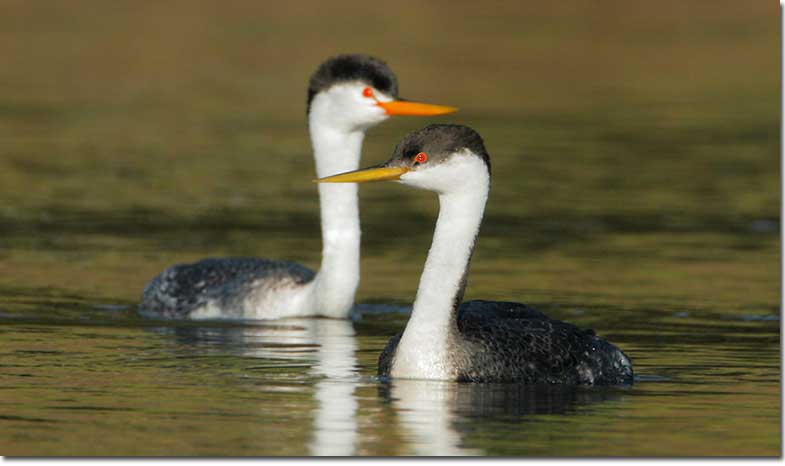
This photo shows both Clark’s Grebe (left) and the Western Grebe on the right. Note the differences in the color of the bill, sometines hard to distinguish when seen in poor light. In non-breeding plumage the black below the eye recedes, making the face pattern almost identical. Photograph © Tom Grey.

